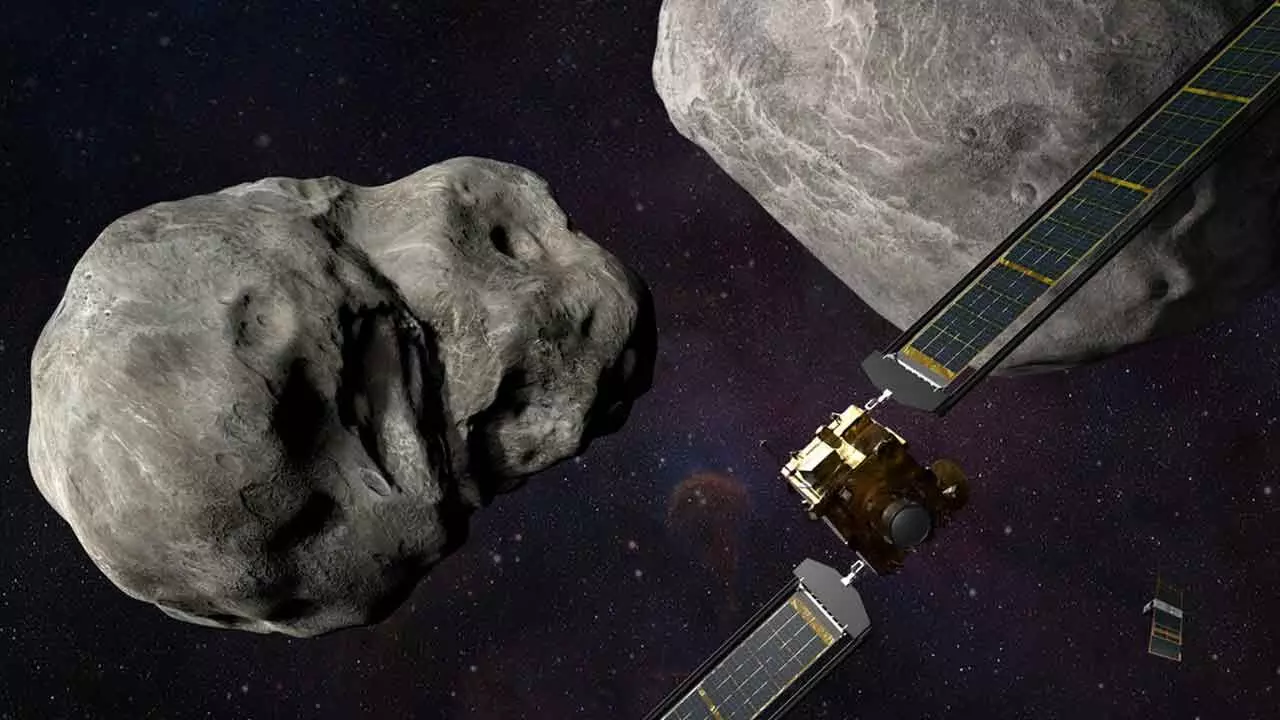NASA’s asteroid hunter that protected Earth signs off
By discovering thousands of previously unknown near-Earth objects, NEOWISE has significantly advanced our understanding of the potential threats posed by these celestial bodies
NASA’s asteroid hunter that protected Earth signs off

While its end is imminent, NEOWISE's legacy lives on. The knowledge gleaned from its observations will inform the upcoming NEO Surveyor mission, a dedicated endeavor to identify and track potentially hazardous asteroids. This continued vigilance is crucial, as the threat of a catastrophic impact, though statistically improbable, remains a sobering reality
Launched in 2011, NASA's NEOWISE mission operated in Earth's orbit until late last week. It detected more than 3,000 near-Earth objects or NEOs – asteroids or comets whose orbits can bring them close to Earth, even with the possibility of a collision. NEOWISE was shut down on August 8. Surveying the population of NEOs is central to the emerging concept of planetary defence. That is, understanding and mitigating the risk of collision from asteroids large enough to do significant damage to Earth.
NEOWISE has made fundamental contributions to establishing the knowledge base for planetary defence, with more than 200 of the 3,000 objects it studied not known to us previously. Now at mission end, and commanded by NASA to shut itself down, NEOWISE will re-enter Earth's atmosphere before the end of this year. Where does that leave us with defending our planet?
From astrophysics to planetary defence
NEOWISE started life as a different mission, simply called WISE (Wide-field Infrared Survey Explorer). It was designed to study the infrared radiation from distant galaxies in the universe. Infrared means “beyond red” – infrared light sits just past the red end of the spectrum of colours humans can see. We know infrared radiation better as the heat from the Sun, for example, or from a radiator keeping us warm in winter. When the coolant on the WISE mission ran out and these sensitive observations of galaxies couldn't be carried out any more, NASA granted a mission extension under the NEOWISE name.
They realised the telescope system was still sensitive enough to detect asteroids and comets that come close to Earth and the Sun, thereby having a very strong infrared signal. NASA has an extraordinary history of squeezing extra life out of missions that reach completion. In this case, NEOWISE represented an entire second life, in an entirely different area of research.
How will we defend Earth now?
As well as the discovery and study of thousands of NEOs, NEOWISE established the foundation of knowledge that has informed a new, dedicated planetary defence mission. NASA's NEO Surveyor will be launched in 2027. NEO Surveyor's goal is to discover approximately two thirds of all NEOs larger than 140 metres in diameter, over a five year baseline survey.
This is a big step toward fulfilling the mandate United States Congress has provided to NASA: to discover 90 per cent of all NEOs in this size range. If they hit Earth, asteroids of this size could cause mass casualties if the impact were over a large metropolitan region.
You might think this poses a bit of a risk – shutting down NEOWISE three years before launching NEO Surveyor. What happens if one of these big asteroids comes our way in the next few years? The risks are very small, as estimates show asteroids 140 metres in diameter impact Earth only approximately every 20,000 years.
So, we would have to be extremely unlucky to have one in any given three-year period, especially impacting a place that would cause a large amount of damage. Only around 3 per cent of Earth's surface is occupied by urban areas. NASA doesn't really have much of a choice with the end of NEOWISE. The Sun's 11-year activity cycle is picking up and causing Earth's upper atmosphere, the ionosphere, to thicken. NEOWISE is flying through this ionosphere and can't raise its orbit, so the ionosphere is inevitably dragging NEOWISE back to Earth.
NEO Surveyor started construction in 2023, so a 2027 launch is pretty impressively rapid, which is minimising the gap between NEOWISE and NEO Surveyor. NEOWISE is scheduled to enter Earth's atmosphere before the end of the year, but we don't know precisely when. Weighing almost 700kg, some of NEOWISE itself is likely to impact the surface of Earth. Hopefully it stays away from populated areas in the process – some recent re-entry events have resulted in space debris falling reasonably close to populated areas.
An asteroid is coming! What next?
Knowing about an asteroid on a collision course with Earth is one thing. Doing something about it is another thing altogether. Huge steps toward planetary defence occurred two years ago, when the DART mission flew to an asteroid, impacted it, and changed its trajectory. This demonstrated it's possible to change the course of asteroids, which could be used in the future to protect Earth from a collision.
Predicting potential
Earth impacts as far as possible in advance, years preferably, gives the DART-style technology approach a chance. The pioneering work of NEOWISE, and the upcoming comprehensive observations of NEO Surveyor, will place an enormous amount of information in our scientific bank, which will never go out of date and will be the basis for planetary defence for perhaps hundreds of years into the future.
(The author is associated with Curtin University)

